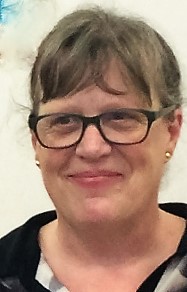| Pages in topic: [1 2 3] > | How do you arrange your translation files/folders? Thread poster: Dylan J Hartmann
|
|---|
I know this might be a bit drab, but it's a question that's been bugging me for a while now, especially when I have to find previous translations that I can use as a template for any current job that I am working on.
Am I arranging my files/folders in the best way?
I'll mention how I arrange things and will welcome feedback and sharing of potentially better ways of doing things.
Firstly I have a folder "!!!Translation" that contains all jobs, current and p... See more I know this might be a bit drab, but it's a question that's been bugging me for a while now, especially when I have to find previous translations that I can use as a template for any current job that I am working on.
Am I arranging my files/folders in the best way?
I'll mention how I arrange things and will welcome feedback and sharing of potentially better ways of doing things.
Firstly I have a folder "!!!Translation" that contains all jobs, current and past, saved in an automatically backed-up cloud folder (I prefer Google's Drive, but there are many to choose from).
Within this folder I have made sub-folders for every company/client that I have worked for.
When I receive a new job, I'll create a sub-folder within that company's folder and name it as the date received.
So, it looks like this !!!Translation>Company1>25.3.15
Using the mac OS, whenever I have job similar to something previous, I use the search function in Finder. This is where things get a little tricky because I have to search for my translation of one part of the content in the source document. For example, I just received a large set of receipts that I had previously translated (for a different period), so I had to type my translation of one of the business names in Finder, and it led me to the .doc file of that previous translation.
This method has proven to be quite successful, I'd love to hear your experiences.
Regards,
DJH ▲ Collapse
| | | |
I gave up paying much attention to files and folders. It's a mess. And it doesn't matter it is. The Finder/Spotlight will find anything I need in an instant. In 1997, I started to use a CAT tool (for "literary" texts as well...), and not much later, I adopted the "Big Mama" philosophy: Add everything you translate in a language pair to one big TM, so a search will lead to both source and target language in one go.
Cheers,
Hans
| | | | Phil Hand 
China
Local time: 04:37
Chinese to English
| It's like you're reading my mind... | Mar 25, 2015 |
DJHartmann wrote:
So, it looks like this !!!Translation>Company1>25.3.15
That's exactly what my set up looks like. I tend to group my work by months, because I invoice by the month, so my folder Translation/XYZ Translation/15-02-04 will contain all my work for XYZ Translation in the month of February.
Oh, I just noticed you've got your date the wrong way round. Surely easier to start with the year so that they all line up in date order in your file system?
But like Hans said, the joy of search means that it is much less important now than it used to be. I'm still running Google Desktop, despite its sad demise.
| | | | Dylan J Hartmann 
Australia
Member (2014)
Thai to English
+ ...
MODERATOR TOPIC STARTER | Date modified | Mar 25, 2015 |
Phil Hand wrote:
Oh, I just noticed you've got your date the wrong way round. Surely easier to start with the year so that they all line up in date order in your file system?
Good point, however I arrange the folders by 'Last Modified'. This is helpful when I'm working on a revision from a few days ago.
| | |
|
|
|
Dan Lucas 
United Kingdom
Local time: 21:37
Member (2014)
Japanese to English
| ISO 8601 FTW | Mar 25, 2015 |
Phil Hand wrote:
Oh, I just noticed you've got your date the wrong way round. Surely easier to start with the year so that they all line up in date order in your file system?
Yup, I put a yyyy-mm-dd date in every folder name. Very useful if you ever want to do any automated processing of your data, as well as sorting.
Dan
| | | | | Me worry about the date format? | Mar 25, 2015 |
Yet another unnecessary worry. The OS provides a date stamp. Even Windows does (I suppose).

Cheers,
Hans
| | | | Sheila Wilson 
Spain
Local time: 21:37
Member (2007)
English
+ ...
| How do you organise your TMs? | Mar 25, 2015 |
DJHartmann wrote:
whenever I have job similar to something previous, I use the search function in Finder. This is where things get a little tricky because I have to search for my translation of one part of the content in the source document. For example, I just received a large set of receipts that I had previously translated (for a different period), so I had to type my translation of one of the business names in Finder, and it led me to the .doc file of that previous translation.
If you have a TM per client/project/subject area... and use that in Translation 1, then your CAT tool will automatically find it and populate Translation 2 from it. No searching needed at all. And if you also take in input from a TM of ALL your previously translated segments (called the BTM - background - in Wordfast), you never need to search elsewhere for anything you've ever translated before. That's really handy for those words and expressions that can have any number of translations - highlight the text and a single click will tell you all the translations you've ever used in the past, irrespective of context client etc.
I rarely if ever refer to past source and/or target files nowadays. In the quoted situation, a few clicks and maybe a bit of editing will see the whole thing translated.
Or perhaps you're talking about something a little different. It would be unusual for me to be using more technology than others . .
| | | | Dylan J Hartmann 
Australia
Member (2014)
Thai to English
+ ...
MODERATOR TOPIC STARTER | Mostly dead pdfs | Mar 25, 2015 |
Sheila Wilson wrote:
I rarely if ever refer to past source and/or target files nowadays. In the quoted situation, a few clicks and maybe a bit of editing will see the whole thing translated.
Sadly, in my language pair most of the source material is dead pdfs.
I wish I could use my CAT tool for every job!!
| | |
|
|
|
| Thank you for asking! | Mar 25, 2015 |
I thought that might be a question for beginners, but what seems common sense to some other haven't thought about.
I find that my system is evolving in the shape of yours, I have a folder for each client, but then I adjust the system according to the work the client sends, e.g. if a client sends a couple of documents each week I have sub-folders for each month and arrange the files by date, starting with the year. If a client sends something once in a while then I just file it unde... See more I thought that might be a question for beginners, but what seems common sense to some other haven't thought about.
I find that my system is evolving in the shape of yours, I have a folder for each client, but then I adjust the system according to the work the client sends, e.g. if a client sends a couple of documents each week I have sub-folders for each month and arrange the files by date, starting with the year. If a client sends something once in a while then I just file it under that client and add sub-folders if work for that client should increase. Also, I do have a sub-folder for invoices and contract.
What I was wondering about the most is, how others work with TMs, I started with one big TM, thinking its all there anyway, but now I have a separate TM for each client. So far I am only using a free version of a CAT tool, which works well so far, but I am wondering what more a paid version can offer and how to organise things for the best. ▲ Collapse
| | | | Samuel Murray 
Netherlands
Local time: 22:37
Member (2006)
English to Afrikaans
+ ...
| I still use the method I used at the beginning | Mar 25, 2015 |
DJHartmann wrote:
Am I arranging my files/folders in the best way? ... This method has proven to be quite successful, I'd love to hear your experiences.
I still use roughly the same method as I had used since the beginning of my career. Example:
Before deadline: C:\Users\MyName\Desktop\client ABC Trans 27mar15
After deadline, move to: D:\2015\jobs 2015 march\client ABC Trans 27mar15
In other words, all jobs get a separate job folder, and the folder's name contains the word "client" plus the name of the client and the deadline (I realise this doesn't quite make sense -- I should be "job", not "client", but I used "client" from the beginning, and now I'm stuck with it).
So, for example, if "ABC Translations" send me a job for 27 March 2015, then the folder will be named "client ABC Trans 27mar15". This folder stays on my Desktop until the job is finished. Then, when the job is finished, I move it to a folder for that month's jobs, and those folders are inside folders for years.
If a client sends two jobs with the same deadline, I either add "a" or "b" to the end of it, or add another description to the folder name (which may include the project number), to ensure that I can have separate folders for separate jobs. For some very regular clients, I add a keyboard for the type of job (e.g. if it's an LQA job, I add "LQA", or if it's a screenshot checking job, I add "screens"), so that I can easily find it visually while browsing the archive looking for a specific job.
This means that I don't have folders per client (except in my bookkeeping, but that's different, because those folders contain only invoices, no work material). One can't put all information into a folder structure or folder naming scheme. For some types of information organising one simply has to use an Excel file.
I don't put the project's name in the folder name, but instead I save a copy of the e-mail inside the folder (and the e-mail's subject line usually contains the project number), which allows me to find projects by their project number using a file-name search.
I sometimes save the POs into the job folders as well, and often also a copy of the invoice, but that can depend on whether I invoice for that client on a per-job or per-month basis.
==
The programs "Everything" (VoidTools) and "Agent Ransack" are life-savers when it comes to finding old jobs in my folders.
Meta Arkadia wrote:
In 1997, I started to use a CAT tool (for "literary" texts as well...), and not much later, I adopted the "Big Mama" philosophy: Add everything you translate in a language pair to one big TM, so a search will lead to both source and target language in one go.
For TMs, I use a combination approach.
When a job is for a once-off client or if the job is for something that will not warrant maintaining TMs, I simply create a TM for that particular job inside that job's own folder. If I later discover that I want to re-use that TM (say, a month later I get an update on the job), I use Agent Ransack to search all the TMs in my month or year folders. I always name my TMs in a similar way, so that I can easily find them using file searches.
For some jobs, I use a subject-specific big momma TM as a BTM and a job-specific TM. The big momma TM is in a central location, but the job-specific TM is in the job's own folder.
For some jobs, I always use a subject-specific or client-specific big momma TM, and in those cases, I don't save the TM in the job's own folder, but keep the big momma TM in a central location.
[Edited at 2015-03-25 09:44 GMT]
| | | | Dylan J Hartmann 
Australia
Member (2014)
Thai to English
+ ...
MODERATOR TOPIC STARTER
Gabriele Demuth wrote:
So far I am only using a free version of a CAT tool, which works well so far, but I am wondering what more a paid version can offer and how to organise things for the best.
Try using the free trial of Wordfast Pro (or Trados, if you prefer), and you'll see the benefits yourself. Once my trial ran out, I could never go back to using free CAT tools.
| | | | Samuel Murray 
Netherlands
Local time: 22:37
Member (2006)
English to Afrikaans
+ ...
| I dislike CAT tools that force me to organise using their way | Mar 25, 2015 |
Gabriele Demuth wrote:
So far I am only using a free version of a CAT tool, which works well so far, but I am wondering what more a paid version can offer and how to organise things for the best.
While it is true that some CAT tools will create it's own folders for TMs, documents, etc, I prefer to keep everything in the way that I want it.
For example, when I get a Trados job, Trados creates a folder with the project name, plus a set of subfolders, in the default Trados location (which I was able to set up as being a folder called "Trados Jobs" on my desktop).
When I'm finished with a Trados job, I copy the deliverable files into my own job folder, so that I can easily find it. Then, I zip up the project folder from the Trados Jobs folder (and add the word "project" in front of it, so that I know it's the Trados files), and then I move the zip file to my own job folder, and then I delete the original project folder from the Trados Jobs folder. This means that my Trados Jobs folder is almost always empty (I suppose for translators who don't delete their projects, that folder will be stuffed with old projects' project folders).
When I use OmegaT, OmegaT also creates a set of folders, but I have the choice of where I want to save it. I always name my OmegaT projects with a name that contains the word "omt" in it (to easily identify the folder), and when the translation is done, I always copy the target files out of the OmegaT project folder into my own job folder (I sometimes also zip up the OmegaT project folder once I'm done with the job, to keep things clean).
[Edited at 2015-03-25 09:53 GMT]
| | |
|
|
|
Francis Murphy (X) 
Canada
Local time: 17:37
French to English
| File system, dead PDFs | Mar 25, 2015 |
I agree with others that year-month-date is best. It sorts alphabetically in order by date. In fact, I use yyyymmdd as a prefix to all my filenames, except for final versions sent back to a client. I never trust "date modified". If you happen to open an old file (unless it is set as "read only") and then accidentally hit the space bar or any keyboard character, that date will change to the present.
The filename will also contain the client name (abbreviated), client's P.O. number... See more I agree with others that year-month-date is best. It sorts alphabetically in order by date. In fact, I use yyyymmdd as a prefix to all my filenames, except for final versions sent back to a client. I never trust "date modified". If you happen to open an old file (unless it is set as "read only") and then accidentally hit the space bar or any keyboard character, that date will change to the present.
The filename will also contain the client name (abbreviated), client's P.O. number and possibly revision number (for my internal use only). The prefixed date is the date I received the P.O.
After I close a job, I take the whole folder, go to "Properties" (in Windows) and mark it "read only", checking the box for subfolders and files. That way I can be certain of what existed at that moment in time. Mac OS has a similar capability.
When I need to open a file later for some re-use, the "read only" forces me to save the new version under a new or modified name. This avoids the risk of corrupting my original file.
My intent in doing these things is to allow a more or less "paperless" office. However, I always print hardcopies of invoices for my own files.
PDFs: Here is a link on how to deal with dead PDFs: https://www.youtube.com/watch?v=ZwYgFbWzpFQ
I have also successfully worked with ABBYY Fine Reader for this; it seems quite good at preserving formatting from a scanned paper document. ▲ Collapse
| | | |
Phil Hand wrote: DJHartmann wrote:
So, it looks like this !!!Translation>Company1>25.3.15
That's exactly what my set up looks like.
Translations2015>ClientX>Jobnr. Sometimes Jobnr is subdivided.
The jobnr is my own sequential jobnr, starting with 001 each year. I do not change the name of the files, because all clients want to keep their own file names.
I keep the TMs all together in the same folder (WF, Studio and converted files). One TM per end client, except tournism where all texts are in one big TM.
Accounting is in Accounting2015>subfiles such as Invoices, Quotes, etc.
| | | | | Artistically | Mar 25, 2015 |
But I shall now take the time to see how others do it....
| | | | | Pages in topic: [1 2 3] > | To report site rules violations or get help, contact a site moderator: You can also contact site staff by submitting a support request » How do you arrange your translation files/folders? | Trados Business Manager Lite | Create customer quotes and invoices from within Trados Studio
Trados Business Manager Lite helps to simplify and speed up some of the daily tasks, such as invoicing and reporting, associated with running your freelance translation business.
More info » |
| | CafeTran Espresso | You've never met a CAT tool this clever!
Translate faster & easier, using a sophisticated CAT tool built by a translator / developer.
Accept jobs from clients who use Trados, MemoQ, Wordfast & major CAT tools.
Download and start using CafeTran Espresso -- for free
Buy now! » |
|
| | | | X Sign in to your ProZ.com account... | | | | | |













